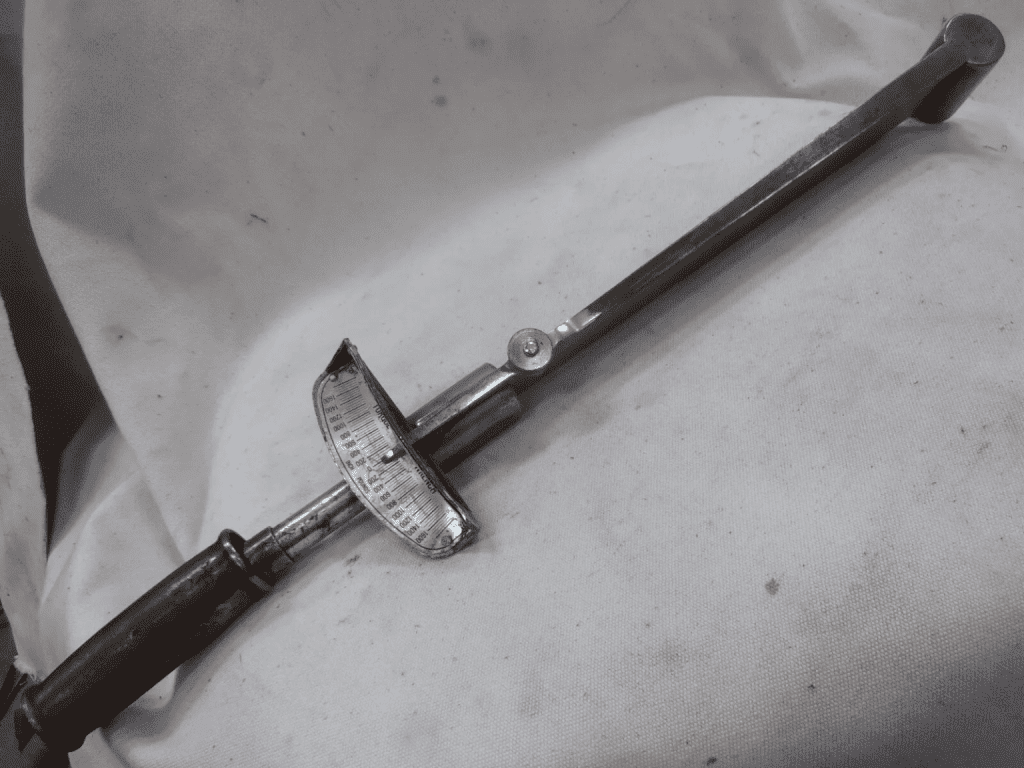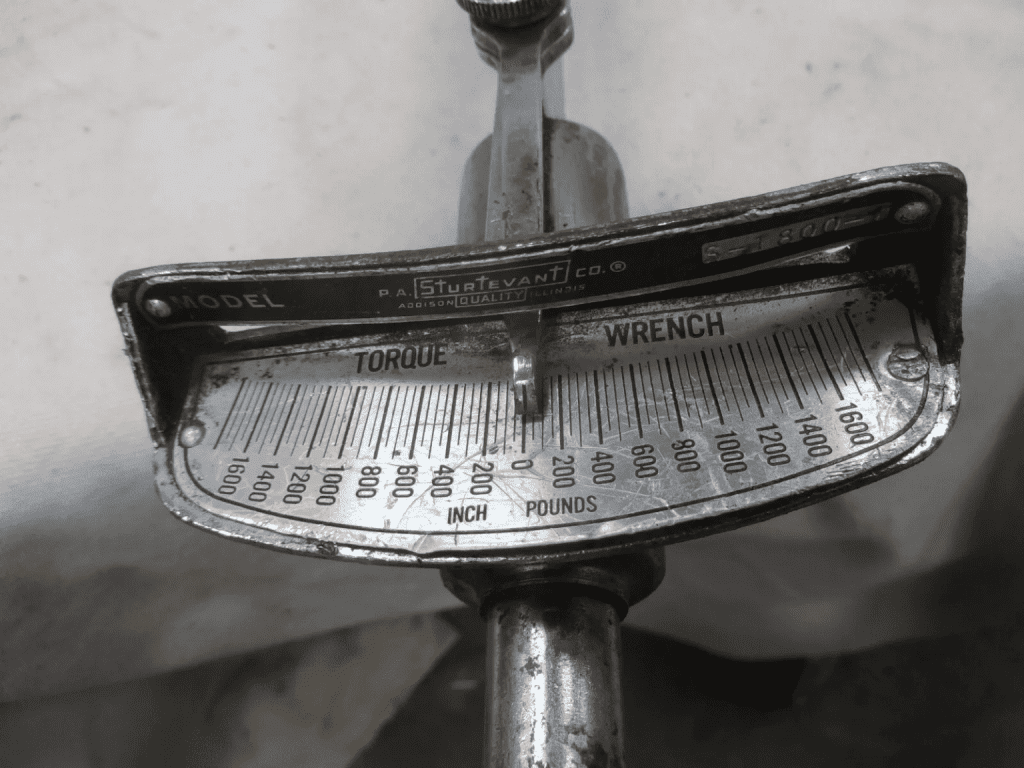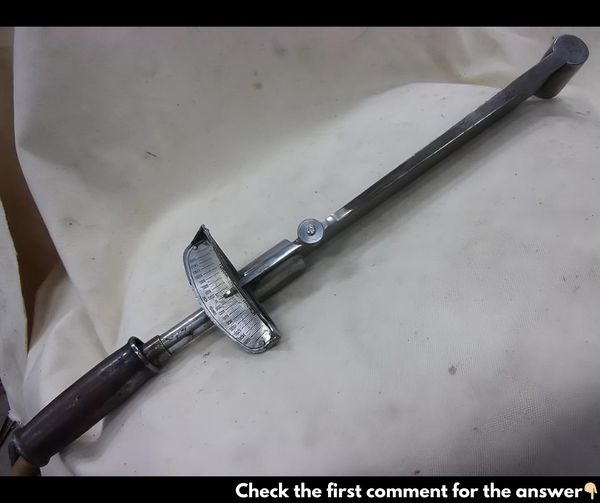The torque wrench is a tool so ubiquitous in mechanics and engineering that it’s easy to overlook its significant impact. Yet, its invention in the early 20th century revolutionized how machines were assembled and maintained, ensuring precision and safety in ways that were previously impossible. The story of the vintage torque wrench is not just about a tool; it’s about innovation, accuracy, and the progression of engineering standards. Let’s dive into its origins, usage, and enduring legacy.

The Birth of the Torque Wrench: Meeting the Demand for Precision
The torque wrench was first invented by American engineer Conrad Bahr in 1918. At the time, industrial machines were growing in complexity, and the need for exact torque specifications became critical to avoid over-tightening or under-tightening bolts. These issues could result in either mechanical failures or safety hazards, particularly in sectors like automotive and aerospace, where precision is key.
Bahr’s invention came as a solution to these problems. He developed a simple, mechanical device that could apply a specific amount of torque to nuts and bolts, ensuring consistent fastening. This marked a significant shift in engineering, allowing workers to meet precise standards and avoid errors that could compromise structural integrity. The invention of the torque wrench quickly gained popularity across various industries, becoming an indispensable tool for mechanics, engineers, and technicians alike.
The Evolution of Torque Wrench Technology
The vintage torque wrench was originally a mechanical device, straightforward but highly effective. Early models were based on beam or spring mechanisms, both of which allowed for precise torque measurement:
- Beam-Type Torque Wrench
The beam-type torque wrench was one of the earliest designs. It consisted of a lever and a calibrated scale. As the user applied torque, the beam would bend, and a pointer on the scale would indicate the amount of torque being applied. This design was simple yet effective, providing a visual representation of the torque level. - Spring-Type Torque Wrench
The spring-type wrench was another popular model. It utilized a calibrated spring mechanism to measure torque. The user would adjust the tension of the spring to a specific setting, and the tool would click or signal when the desired torque was reached. Though more advanced than the beam type, it still required manual calibration and regular adjustment to maintain accuracy.
While these early models were not as user-friendly or efficient as today’s digital torque wrenches, they were revolutionary at the time. The ability to apply a precise amount of torque manually had a profound impact on the reliability and longevity of machinery, particularly in industries where precision was vital for safety and performance.
The Role of the Torque Wrench in Various Industries
The torque wrench quickly became a staple in many industries. Its application extended far beyond the automotive world, finding a place in aerospace, construction, and even home DIY projects. Wherever fasteners needed to be applied with precision, the torque wrench was there to ensure that bolts were neither too loose nor too tight.
- Automotive Industry
In the automotive world, the torque wrench became essential for assembling engines and mechanical systems where exact torque specifications were crucial for preventing damage to components. Misaligned or over-tightened bolts in an engine can lead to catastrophic failures, making the torque wrench an invaluable tool for ensuring the correct amount of pressure is applied. - Aerospace Engineering
The aerospace industry, where safety and precision are paramount, also adopted the torque wrench early on. Aircraft components, such as wings, engines, and landing gear, require precise assembly, and the torque wrench enabled technicians to meet the strict standards of the aviation world. Errors in this field could lead to serious safety risks, making tools like the torque wrench indispensable. - Construction and Structural Work
In construction, torque wrenches play a critical role in assembling steel structures, bridges, and even skyscrapers. Ensuring that bolts and fasteners are applied with the correct amount of force helps maintain the structural integrity of large projects. This tool provides engineers and workers with the confidence that every connection is safe and secure.

Legacy of the Vintage Torque Wrench: A Symbol of Engineering Precision
Despite the rise of digital and click-type torque wrenches, vintage models remain cherished by collectors, mechanics, and tool enthusiasts. Their durability, simplicity, and historical significance make them a favorite among those who appreciate classic engineering tools.
- Collector’s Item
Vintage torque wrenches are often sought after by collectors for their craftsmanship and history. Many of these tools were built to last, made from high-quality materials that have stood the test of time. Today, they can be found in antique shops, tool collections, and even museums, where they serve as reminders of early 20th-century ingenuity. - Influence on Modern Tools
The design principles behind the vintage torque wrench continue to influence modern torque measurement technology. Click-type and digital torque wrenches, which are more convenient and user-friendly, still rely on the same fundamental idea: applying a specific amount of force to ensure a secure, reliable connection. The evolution of torque wrenches may have advanced, but the legacy of the vintage models remains at the core of modern precision tools.

The Importance of Torque Wrenches in Today’s World
In today’s fast-paced, technology-driven world, precision is still as critical as ever. Whether in aerospace, automotive repair, or even assembling furniture at home, the torque wrench is an essential tool for ensuring that mechanical connections are made securely and safely.
Digital models have streamlined the process, with more accurate and easy-to-use designs. Yet, the core principle of controlling torque remains the same—a principle pioneered by the original torque wrenches of the early 20th century.

Conclusion: The Vintage Torque Wrench’s Enduring Impact
The invention of the torque wrench by Conrad Bahr in 1918 was a game-changer in the world of mechanics and engineering. This tool, designed to meet the demand for precise fastening, quickly became an essential part of industries ranging from automotive to aerospace. While the vintage torque wrench may have been replaced by modern, more advanced versions, its legacy continues to influence the design and function of the tools we use today.
For collectors and tool enthusiasts, vintage torque wrenches are prized possessions that represent a time of craftsmanship and mechanical precision. For professionals, these tools remain a testament to the importance of exact torque specifications in ensuring safety and performance. As industries continue to evolve, the vintage torque wrench stands as a symbol of engineering ingenuity and the pursuit of perfection.
